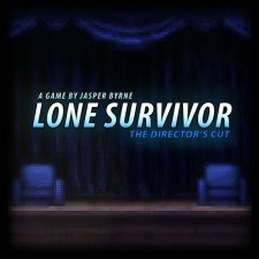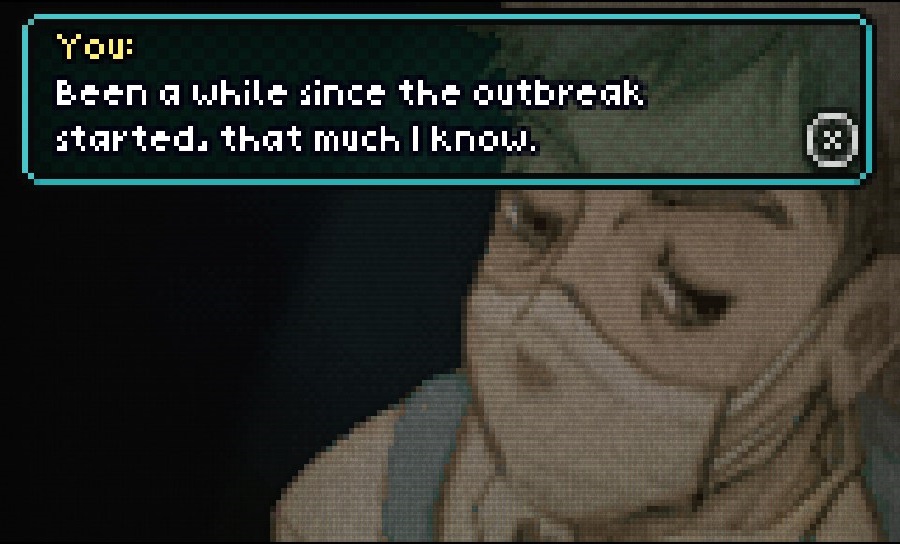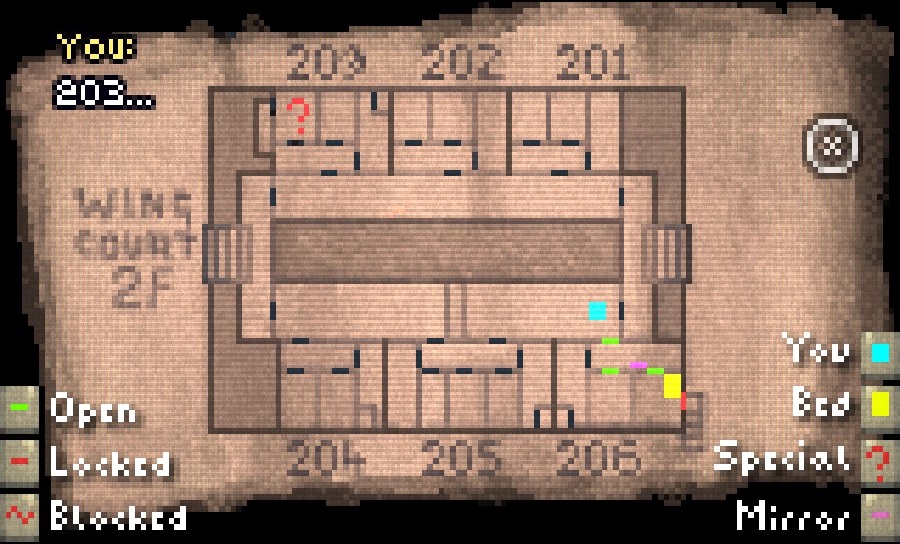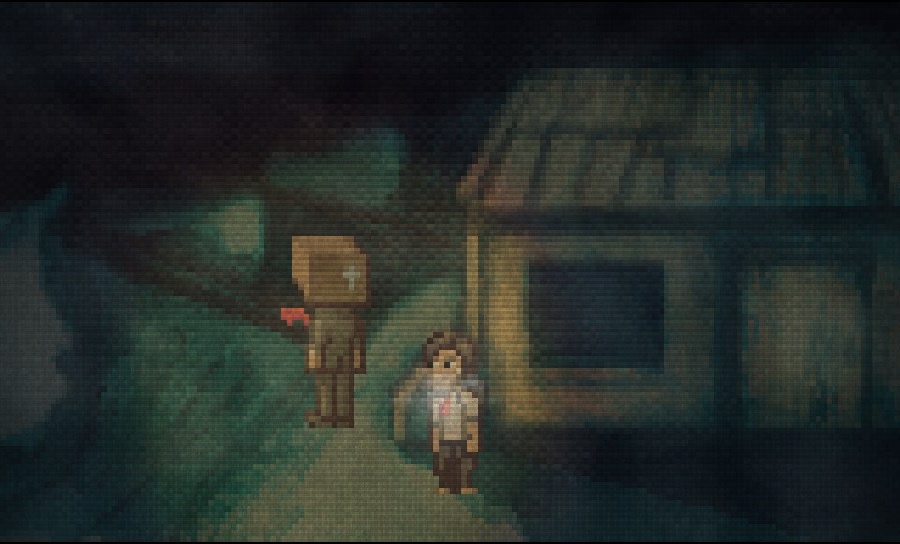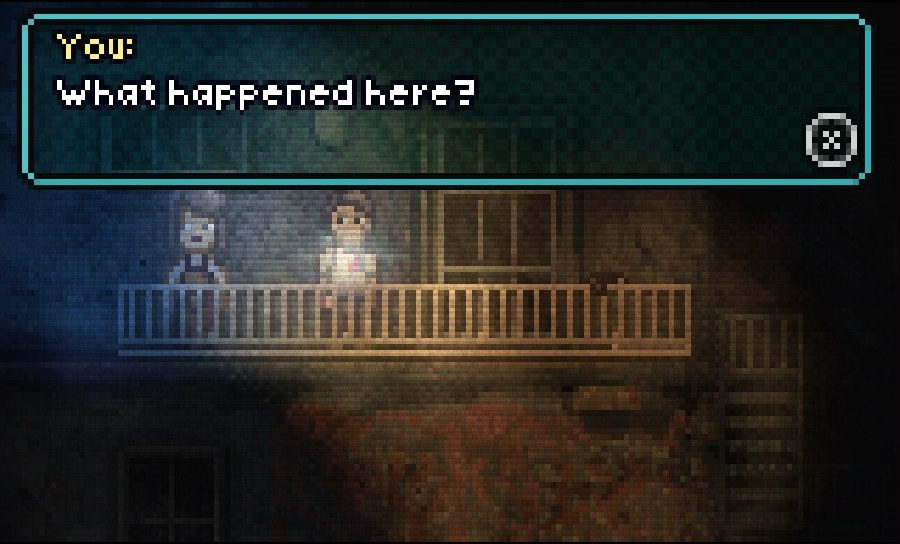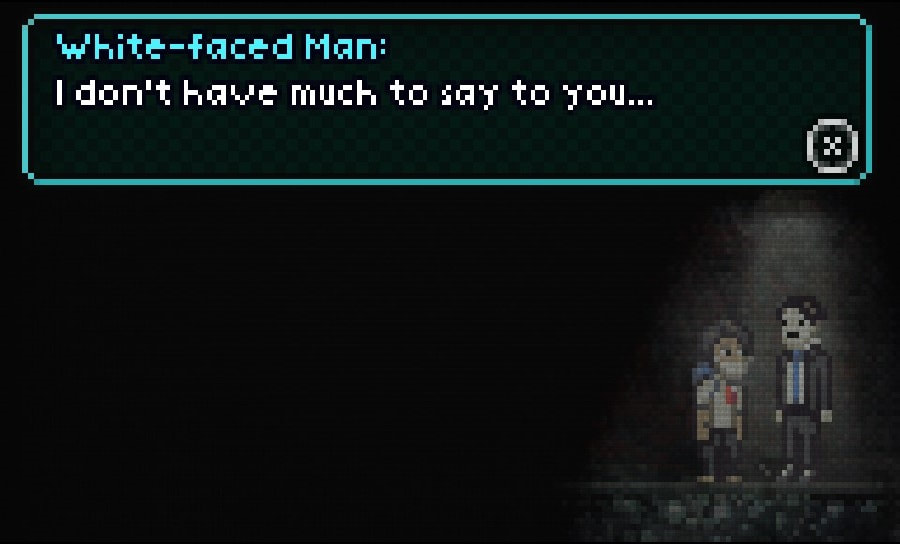LONE SURVIVOR: DIRECTOR'S CUT (VITA)
Is it possible for scares to cut as deeply with sprites as they do with polygons? Have games still the capacity to cause their players as much discomfort in two dimensions as they might in three? It’s a discussion that is unlikely to be settled by one release, but Lone Survivor successfully extols the virtues of a humbler design philosophy when attempting to spook an eighth generation audience. Jasper Byrne’s creepy, well-judged retro homage to all-things Silent Hill places a concerted emphasis on survival, whilst its inventiveness mostly makes up for its brevity.
Awakening to find the world has been overrun by the ‘infected’, it’s your job as the lone survivor (known simply as “You”) to tentatively venture forth each day from your apartment, braving the dingy corridors and dealing with a hoard of freakish monsters. He lives moment by moment, seeking out valuable supplies and trying to make some sense of his situation, before returning to recuperate in the safe haven that is Room 206. With a slew of tricks up its sleeve, Lone Survivor makes for an engrossing adventure that’s equal-parts familiar and unusual.
It shares much in common with Silent Hill. The iconic static noise as enemies approach, the cheap flashlight and the way the lone survivor marks his maps all bare a marked resemblance to Konami’s genre-stalwart. More importantly though, Lone Survivor manages to channel SH’s sombre atmosphere, one where the gloom of the surroundings is a perfect mirror for the isolation You is experiencing, whilst the faceless foes and colourful (and yet somehow still distant-feeling) cut-scenes grant the game a heaviness that’s beyond what you’d expect of its modest visual design.
Awakening to find the world has been overrun by the ‘infected’, it’s your job as the lone survivor (known simply as “You”) to tentatively venture forth each day from your apartment, braving the dingy corridors and dealing with a hoard of freakish monsters. He lives moment by moment, seeking out valuable supplies and trying to make some sense of his situation, before returning to recuperate in the safe haven that is Room 206. With a slew of tricks up its sleeve, Lone Survivor makes for an engrossing adventure that’s equal-parts familiar and unusual.
It shares much in common with Silent Hill. The iconic static noise as enemies approach, the cheap flashlight and the way the lone survivor marks his maps all bare a marked resemblance to Konami’s genre-stalwart. More importantly though, Lone Survivor manages to channel SH’s sombre atmosphere, one where the gloom of the surroundings is a perfect mirror for the isolation You is experiencing, whilst the faceless foes and colourful (and yet somehow still distant-feeling) cut-scenes grant the game a heaviness that’s beyond what you’d expect of its modest visual design.
In amongst these survival-horror tropes you’ll also start to notice a true creative streak. The game’s finest idea revolves around the lone survivor’s ever-changing mental and physical condition, which is constantly reshaping his perception of the surroundings. Regular sleep and sustenance are a must, and cleverly, he’ll reveal through little text-box snippets when he’s flagging. Consequently, it’s a thorough test of survival as you forage for precious tins of beans, pickles, and slightly out-of-date milk.
Many games would stop there, but not Lone Survivor. With a bit of endeavour, You can cook and mix ingredients to create more substantial meals. Eating snacky food recovers health, but offers limited stamina and it’s rarely long before you’re being informed that he’s ‘starving’ again. There’s an element of balance to all decisions; granting your character a few hours respite with his portable stereo or game system is handy, but also costs you a precious battery, which means one less that can be used in the flashlight. Taking pills before bed can bail you out if you’re lacking supplies, but excessive use can lead to some undesirable effects on his psyche.
Why are all these factors important? Ultimately, the ending you’ll receive, the comments You makes, the look of the environments and consequently the nature of the scares, are all influenced by how well you manage him. Exhaustion lends the screen a fuzzy complexion, injury leads to an ominous red pulsing, and general poor mental condition will see you straining to see in excessively dark locales as the power of the flashlight diminishes. If You believes the world is against him, it has a tendency to be.
As well as the smart visual trickery, abrasive, sharp sound effects set the player on edge, whilst the juxtaposition of the soothing ‘safety’ music of You’s apartment and the ear-busting screeches emitted in the more panicky situations is remarkably good. There’s a particularly hair-raising instance deep which sees the lone survivor being chased down a sequence of nightmarish corridors by a giant pincered monstrosity. Viewing the map doesn’t afford you the luxury of a paused game, and as he’s always close behind, you have to trust that your navigation is accurate. The game delights in torturing the player, offering a trophy as a prize for completing this section sans the illumination of your flashlight.
Many games would stop there, but not Lone Survivor. With a bit of endeavour, You can cook and mix ingredients to create more substantial meals. Eating snacky food recovers health, but offers limited stamina and it’s rarely long before you’re being informed that he’s ‘starving’ again. There’s an element of balance to all decisions; granting your character a few hours respite with his portable stereo or game system is handy, but also costs you a precious battery, which means one less that can be used in the flashlight. Taking pills before bed can bail you out if you’re lacking supplies, but excessive use can lead to some undesirable effects on his psyche.
Why are all these factors important? Ultimately, the ending you’ll receive, the comments You makes, the look of the environments and consequently the nature of the scares, are all influenced by how well you manage him. Exhaustion lends the screen a fuzzy complexion, injury leads to an ominous red pulsing, and general poor mental condition will see you straining to see in excessively dark locales as the power of the flashlight diminishes. If You believes the world is against him, it has a tendency to be.
As well as the smart visual trickery, abrasive, sharp sound effects set the player on edge, whilst the juxtaposition of the soothing ‘safety’ music of You’s apartment and the ear-busting screeches emitted in the more panicky situations is remarkably good. There’s a particularly hair-raising instance deep which sees the lone survivor being chased down a sequence of nightmarish corridors by a giant pincered monstrosity. Viewing the map doesn’t afford you the luxury of a paused game, and as he’s always close behind, you have to trust that your navigation is accurate. The game delights in torturing the player, offering a trophy as a prize for completing this section sans the illumination of your flashlight.
There’s two very different ways of playing through the adventure. The ‘shoot everything that moves’ method requires that you make your bullets count, getting close to enemies and blasting upwards for headshots. The combat is wonderfully judged; just adept enough that you can make it work with a bit of skill, just cumbersome enough to remind you that it’s not intuitive to your character – another shrewd nod to the genre’s nineties heyday. Playing it through non-aggressively is really cool, as the player can leave distress flares or hunks of rotting meat to divert the attentions of infected, allowing you to slip past them undetected.
Indeed, everything’s very solid on the gameplay front. It runs a tight ship both in terms of navigation and general design; everything feels like it works to plan. If anything, it’s a bit of a shame the puzzles don’t venture anything more cerebral than standard search ‘n’ find/combine items fare. Maybe it would have thrown the pacing a little, but you feel that with all the clever tricks of perception, there could have been a couple of logic teasers thrown in for good measure. Still, that’s being picky, and it’s not to say there’s no pleasure in the exploration however, and the game is on hand with plenty of neat surprises to keep you guessing as you progress.
Lone Survivor is a brief adventure, good for around 3 ½ hours play first time through. Nevertheless, there’s an awful lot of hidden stuff to uncover. Four main endings can be attained based on the myriad decisions you make throughout the game, and whilst some are a wee bit too similar, they’re a good enough pursuit to warrant a second playthrough at the very least, and the joke ending is a fun reward for the committed.
It’s really a shame that Lone Survivor isn’t a little lengthier, but what we do get is really, really good. Jasper Byrne’s clever creation makes every room count, with good pacing and inventive scares. Moreover, it feels like a survival game in the truest sense, with a cloying atmosphere that you really appreciate when get a moments respite, like evading pursuit of the basement boss and seeing the outdoors, the relief is tangible. Designed by a man who clearly gets survival-horror, Lone Survivor is one of the finest games of its kind.
Indeed, everything’s very solid on the gameplay front. It runs a tight ship both in terms of navigation and general design; everything feels like it works to plan. If anything, it’s a bit of a shame the puzzles don’t venture anything more cerebral than standard search ‘n’ find/combine items fare. Maybe it would have thrown the pacing a little, but you feel that with all the clever tricks of perception, there could have been a couple of logic teasers thrown in for good measure. Still, that’s being picky, and it’s not to say there’s no pleasure in the exploration however, and the game is on hand with plenty of neat surprises to keep you guessing as you progress.
Lone Survivor is a brief adventure, good for around 3 ½ hours play first time through. Nevertheless, there’s an awful lot of hidden stuff to uncover. Four main endings can be attained based on the myriad decisions you make throughout the game, and whilst some are a wee bit too similar, they’re a good enough pursuit to warrant a second playthrough at the very least, and the joke ending is a fun reward for the committed.
It’s really a shame that Lone Survivor isn’t a little lengthier, but what we do get is really, really good. Jasper Byrne’s clever creation makes every room count, with good pacing and inventive scares. Moreover, it feels like a survival game in the truest sense, with a cloying atmosphere that you really appreciate when get a moments respite, like evading pursuit of the basement boss and seeing the outdoors, the relief is tangible. Designed by a man who clearly gets survival-horror, Lone Survivor is one of the finest games of its kind.
